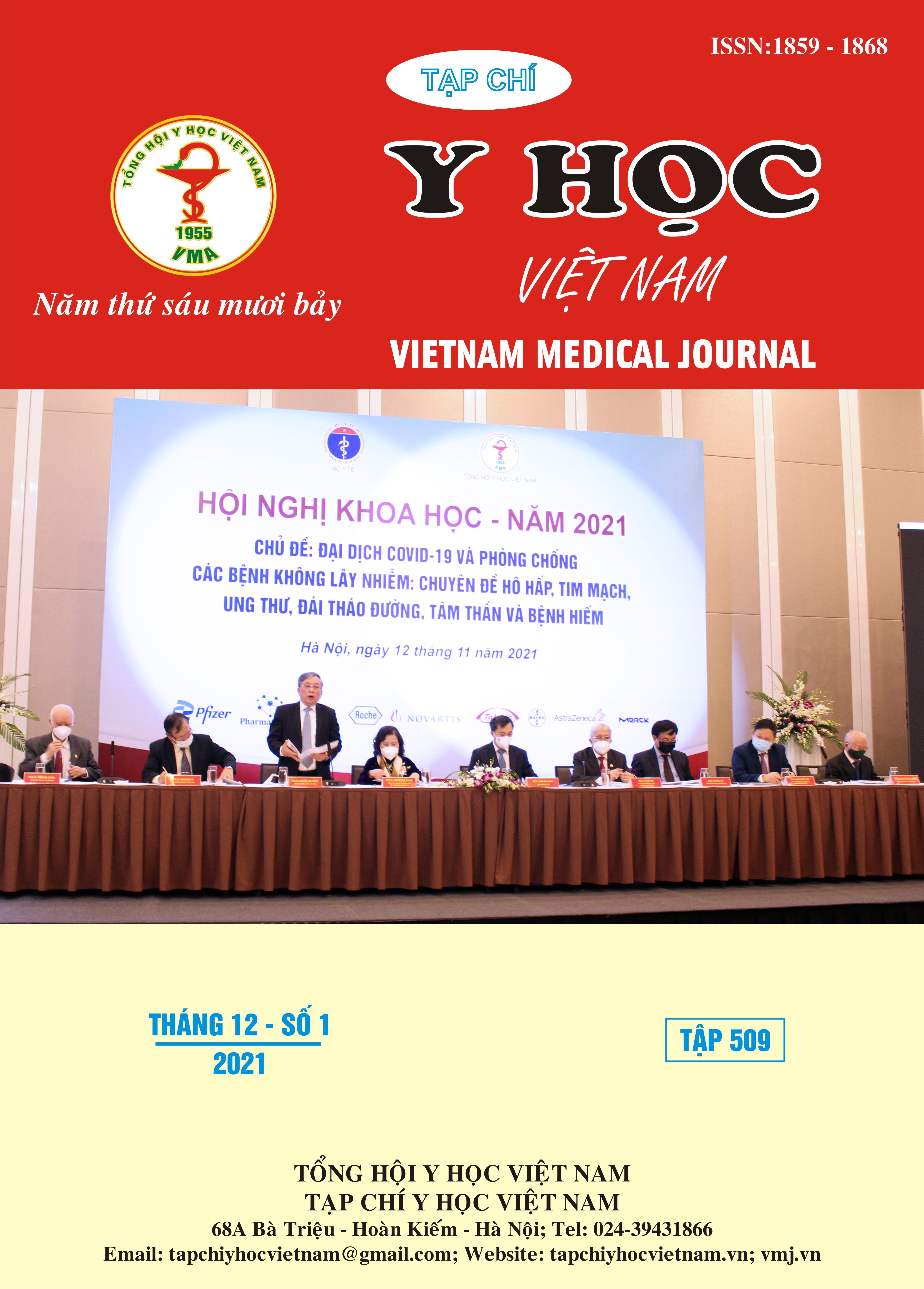CLINICAL FEATURES AND SERUM CONCENTRATION OF BROMADIOLONE AND FLOCOUMAFEN POISONINGS
Main Article Content
Abstract
Objectives: to describe the clinical characteristics and serum toxin concentrations of patients with acute poisoning of long-acting anticoagulant rodenticides - bromadiolone and flocoumafen at Vietnam Poison Control Center, Bach Mai Hospital. Methods: A prospective observational study included 37 patients with acute poisoning with bromadiolone/flocoumafen treated at the Poison Control Center from June 2020 to June 2021. Results: Among the study patients, male accounted for 62.2%, most of them were adults, there were only 2 pediatric patients. The most common cause of poisoning is suicide, however, 27% of poisoning sources were unknown. The most common clinical manifestations were subcutaneous hemorrhage (49%) and intramuscular hematomas (35%). Some patients had severe bleeding such as cerebral hemorrhage (2.7%), GI (27.03%), urinary (27.03%) and abdominal hemorrhage (13.51 %). 3 patients (8.11%) had hemorrhagic shock. Bromadiolone and Flocoumafen concentrations tended to be higher in the group of patients with bleeding or INR > 5 (p 0.06), and significantly higher in the group with major subcutaneous bleeding (p 0.012 and p 0.027 respectively in Bromadiolone and Flocoumafen). Conclusion: The study revealed the clinical features and the relationship between the bleeding manifestations and the serum toxin concentrations of patients with acute poisoning of bromadiolone and flocoumafen.
Article Details
Keywords
bromadiolone, flocoumafen, acute poisoning, clinical features, serum concentration
References
2. G. Richard Bruno (2000). Long-Acting Anticoagulant Overdose: Brodifacoum Kinetics and Optimal Vitamin K. Annals of emergency medicine, 262-267.
3. Yeow-Kuan Chong (2019). Superwarfarin (Long-Acting Anticoagulant Rodenticides) Poisoning, Pathophysiology to Laboratory-Guided Clinical Management, Clin Biochem Rev., 175–185.
4. Sergei Bidny, Kim Gago1 and Mark David (2015). A Validated LC–MS-MS Method for Simultaneous Identifification and Quantitation of Rodenticides in Blood. Journal of Analytical Toxicology, 39(219 – 224
5. Barbara E. Watt, et al. (2005). Anticoagulant Rodenticides, National Poisons Information Service (Birmingham Centre), City Hospital, Birmingham, UK.
6. Wai Yan Ng, et al. (2017). Retrospective Study of the Characteristics of Anticoagulant-Type Rodenticide Poisoning in Hong Kong. Journal of Medical Toxicology, Puplished online 23 April 2018.
7. Jie Yan and Yangyang Shi (2013). Vitamin K treatment of brodifacoum poisoning in a pregnant woman. International Journal of Gynecology & Obstetrics, 122(2), 162-163.


